AI at Work
How to Build Multichannel Marketing Campaigns with Typeface

Akshita Sharma · Content Marketing Associate
June 13th, 2025 · 9 min read
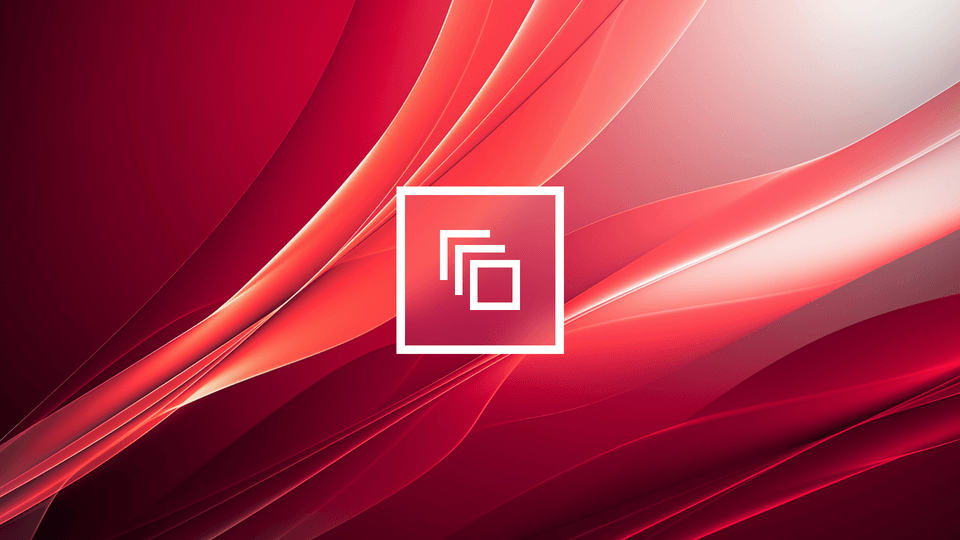
Your multichannel marketing campaigns aren't struggling because you lack creative vision. They're hitting a wall because manual content operations simply cannot scale to meet your audiences' demands.
When teams rely on labor-intensive processes to maintain brand consistency across channels, they inevitably hit a performance ceiling where quality, personalization, or timeliness must be sacrificed.
As more marketing channels get added to the mix, the resources required to maintain consistent messaging grow exponentially. As a result, marketing teams find themselves trapped in production cycles rather than focusing on strategy and optimization.
This guide aims to provide a practical framework to break through this scaling barrier.
With Typeface as your content engine, you can develop and execute coordinated multi channel campaigns a lot more efficiently.
What are multichannel marketing campaigns?
Building multichannel marketing campaigns with Typeface
Multichannel campaign examples
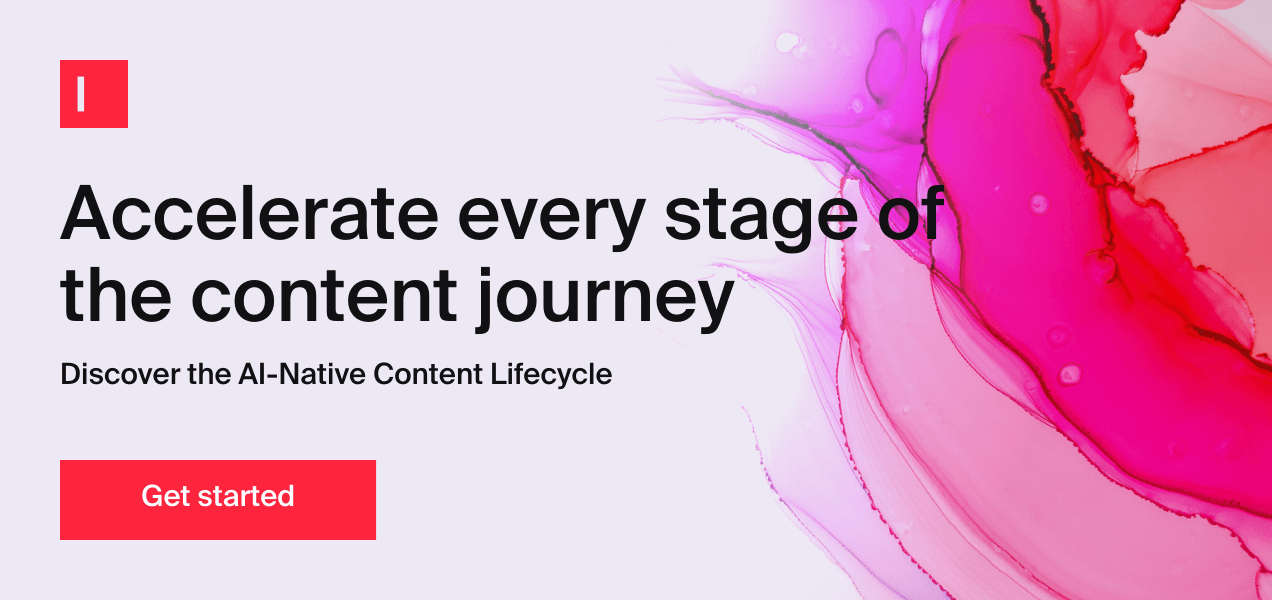
What are multichannel marketing campaigns?
A multichannel marketing campaign leverages multiple communication channels simultaneously to reach and engage target audiences where they naturally spend time.
Rather than relying on a single channel, this approach integrates various marketing channels like social media, email, and traditional advertising to create a cohesive brand experience that meets customers wherever they are.
What makes multichannel campaigns particularly powerful is their ability to reinforce your message through various touchpoints. When a prospect receives your email, sees your social post, and then encounters your digital ad, each interaction strengthens brand recognition and moves them closer to conversion.
What is the difference between multichannel and omnichannel marketing campaigns?
Multichannel marketing involves engaging customers across multiple channels, focusing on maximizing presence and reach within each channel.
In contrast, omnichannel marketing integrates all available digital and physical channels to deliver a seamless, unified, and customer-centric experience, where interactions in one channel inform and shape experiences in others.
Relying solely on a traditional multichannel approach with its inherent silos and potential for fragmented experiences fails to meet modern customer expectations.
And this creates a compelling case for exploring a hybrid strategy.
The key is to enhance existing multichannel marketing frameworks by strategically incorporating core principles and capabilities from the omnichannel model. This approach allows businesses to address the most critical flaw of their existing multichannel setup — inconsistent messaging on key conversion paths.
Building multichannel marketing campaigns with Typeface
Typeface eliminates the traditional content bottlenecks that slow down your multichannel marketing campaigns. Instead of spending hours manually adapting content for different platforms, you can create, edit, and repurpose assets and scale your content localization efforts across multiple channels.
Start with a campaign brief that states all your requirements, and the AI intelligently adapts your messaging for different segments and channels while maintaining your brand's unique voice.
The workflow typically involves the following steps:
Step 1. Selecting the channels
After opening the Multi-Channel Campaign assistant, the first step is choosing the channels for which you want to create content, whether that is social media, email marketing, or other digital channels.
As soon as you make your selection, the system will apply the appropriate AI templates for those specific channels.
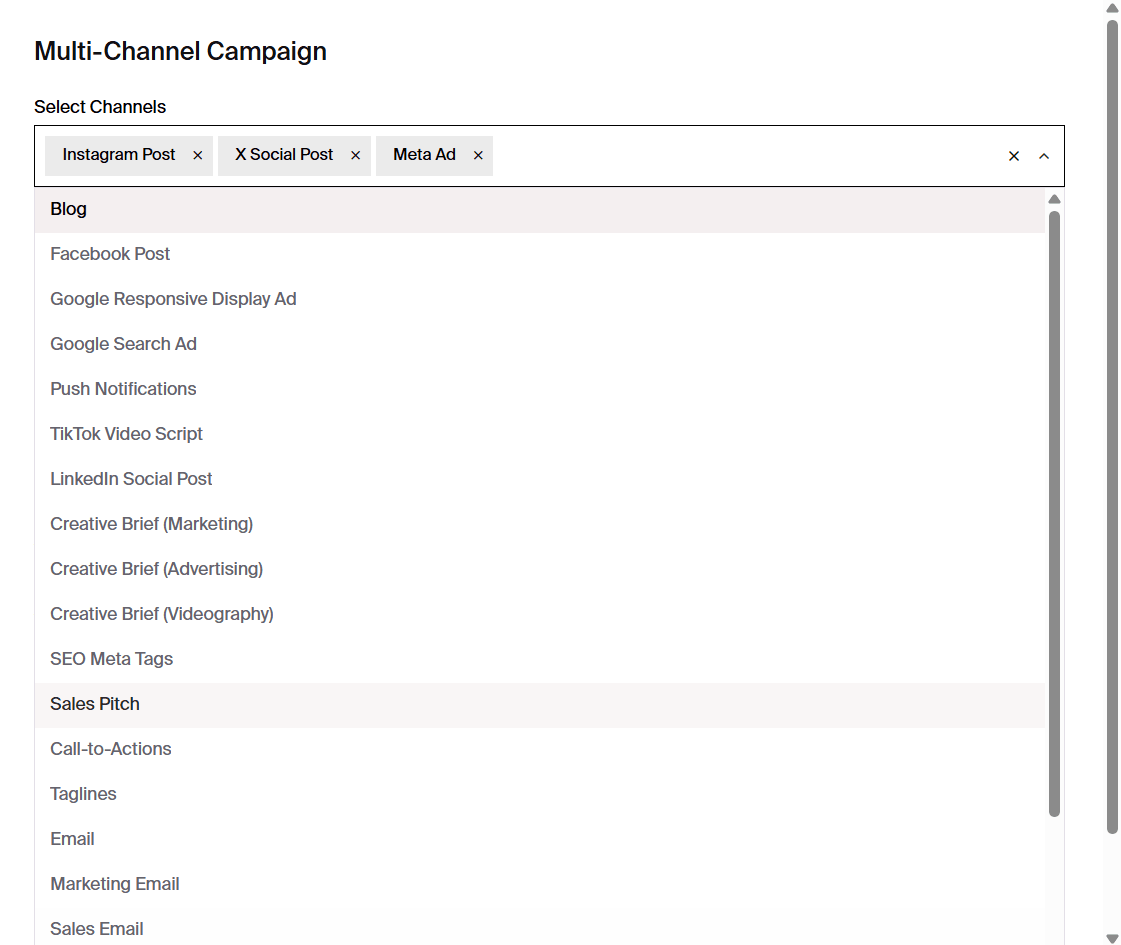
Alternatively, you can jump straight to the next field to input any specific requirements for your multichannel marketing campaigns.
For example, if you're looking for taglines and custom banner ads for a product launch, you can simply input your requirements in this format:
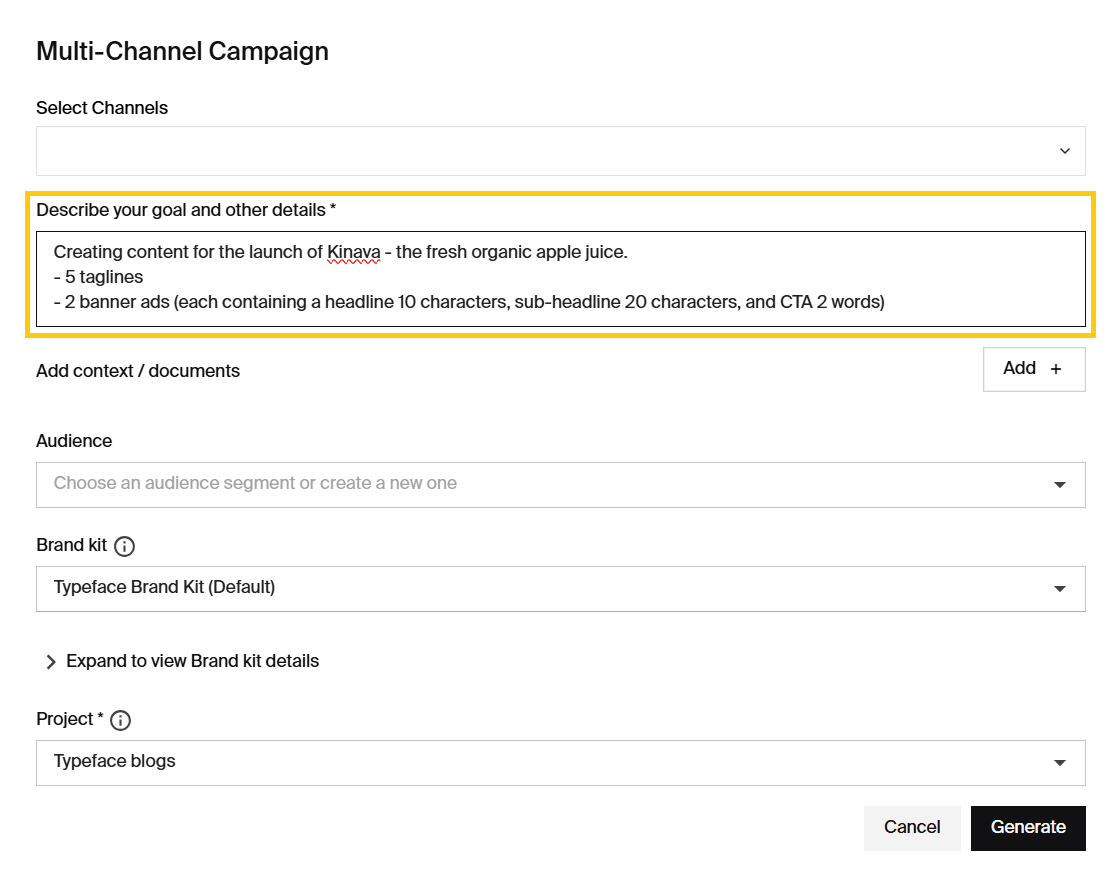
Step 2. Define your campaign goals and the image you want to include
Clearly define the goals for your multichannel marketing campaign, so that the AI can tailor your messaging across various channels to align with these goals.
The AI can also generate custom visuals to go with your content across all the channels, based on the description you provide.
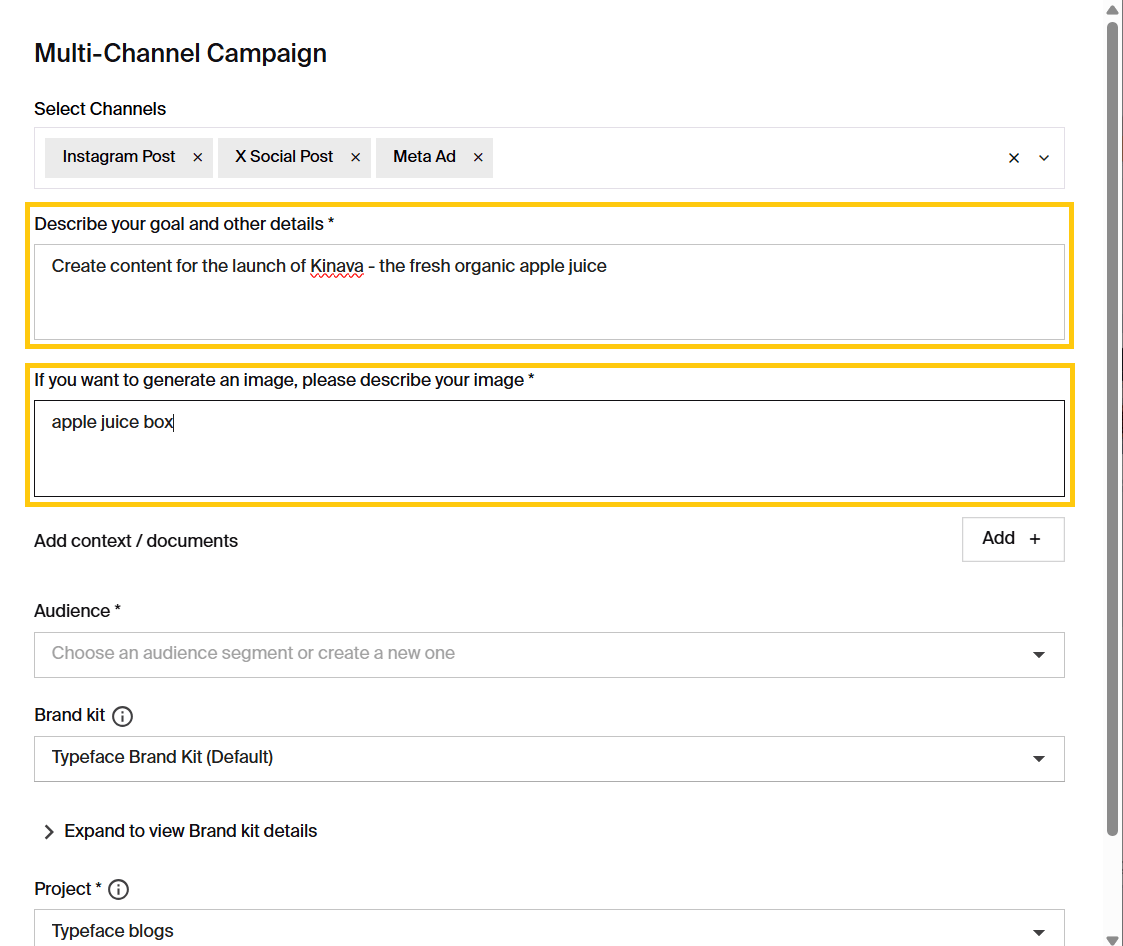
Step 3. Add context for the content
You have the option to include any relevant documents or URLs that can provide the AI with the necessary context and background information for the marketing campaign.
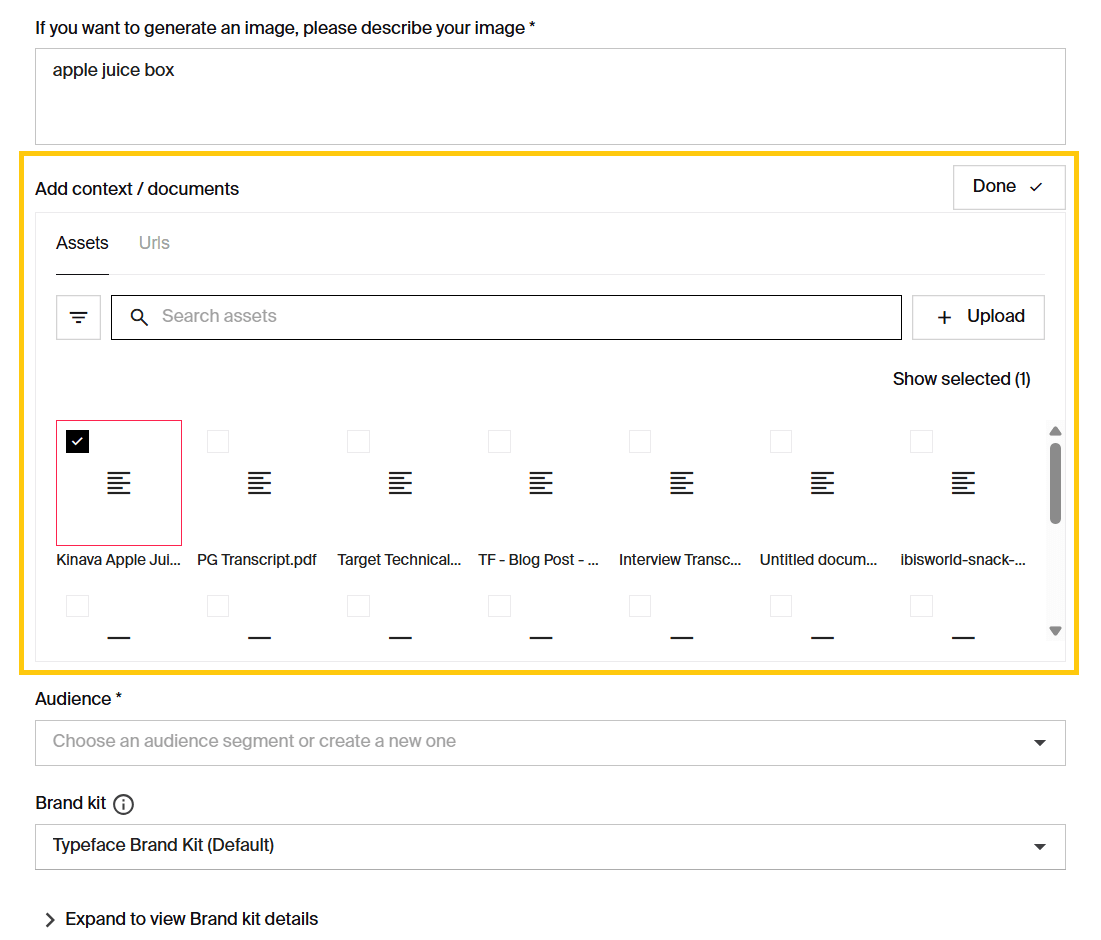
Step 4. Choose your audience(s) and brand kit
Choose your target audience segments for the campaign. You can select one or multiple segments to generate messages that resonate with each group.
The final step involves choosing your brand kit, which contains all the key elements of your brand's identity to ensure consistency throughout your campaign materials.
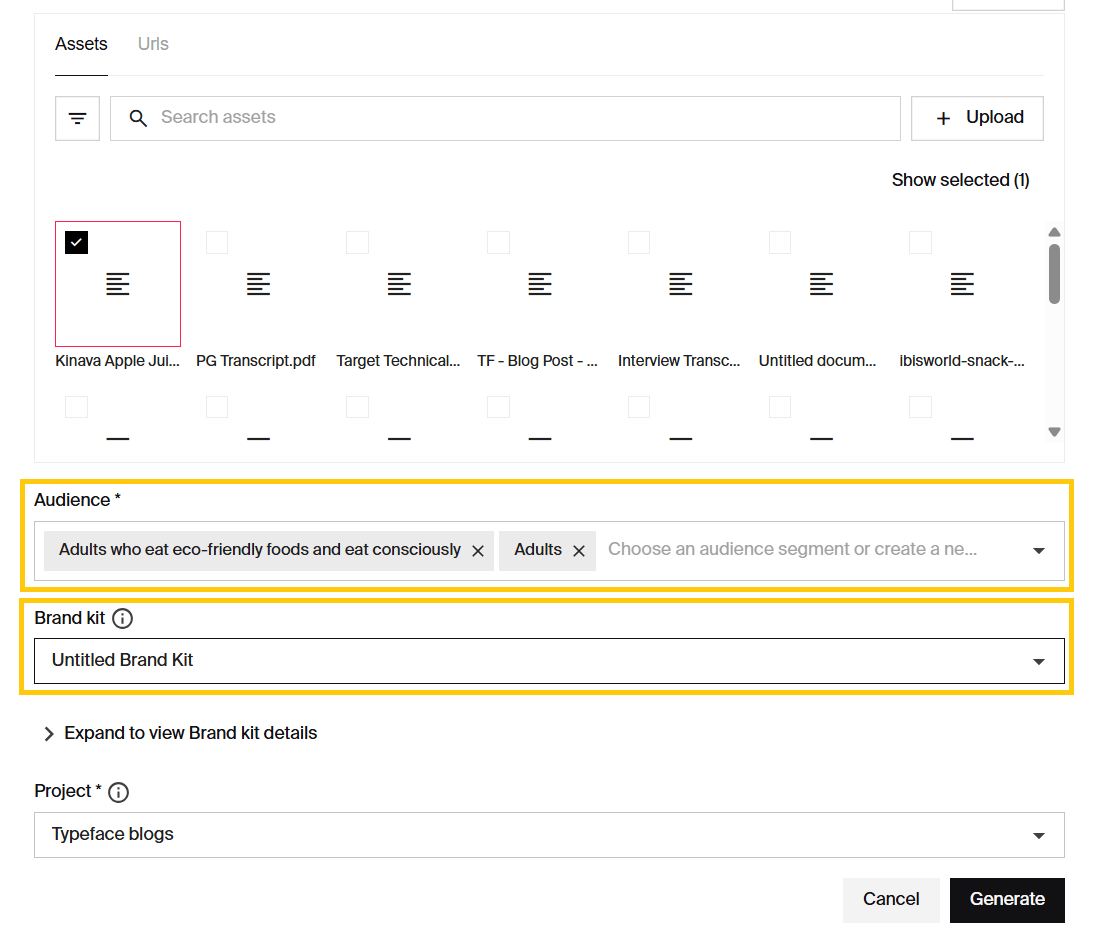
Once you've provided all your inputs, just click the "generate" button. This will create and organize all the content for your multichannel marketing campaign in content feeds, which you can then edit and refine as needed.
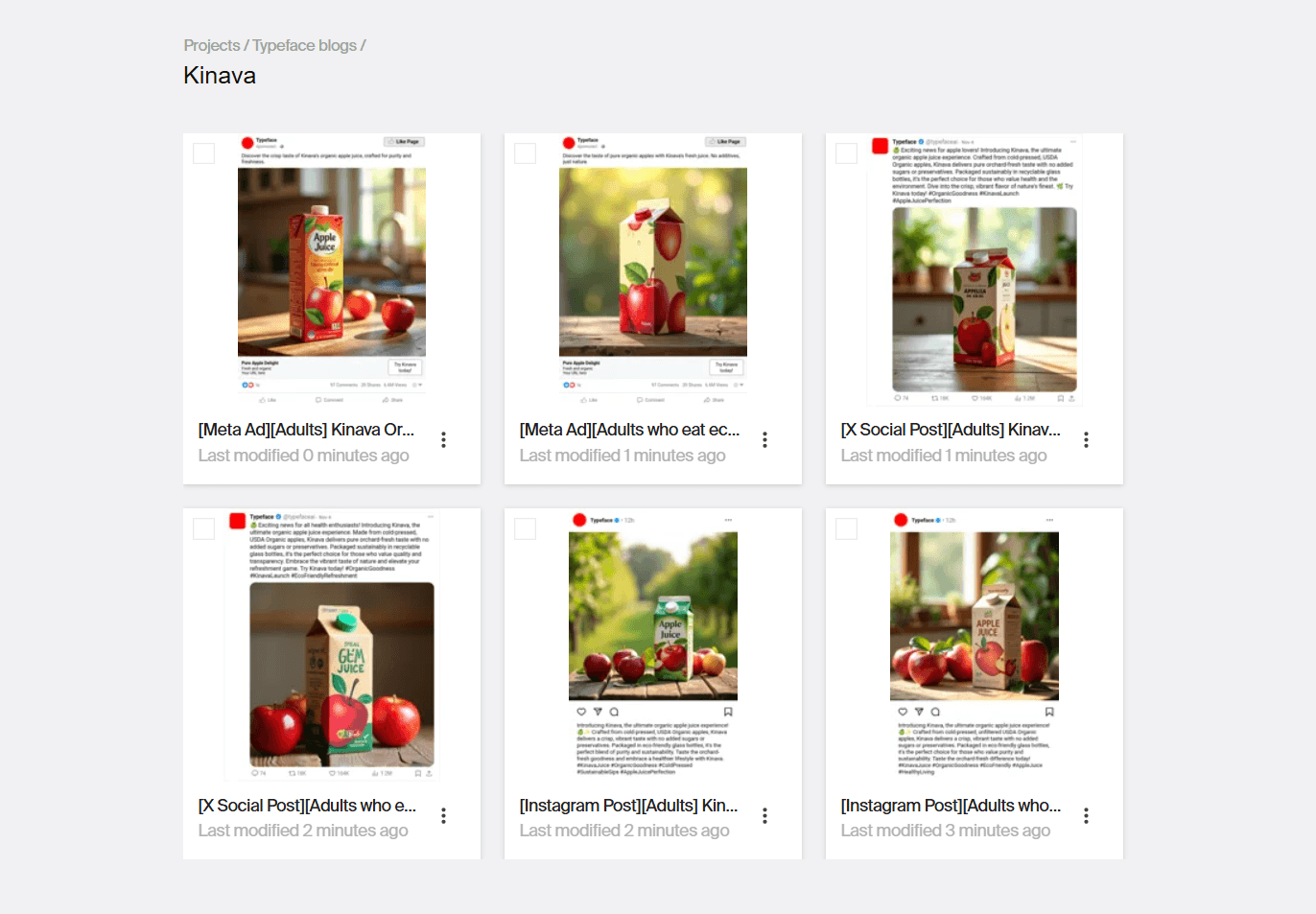
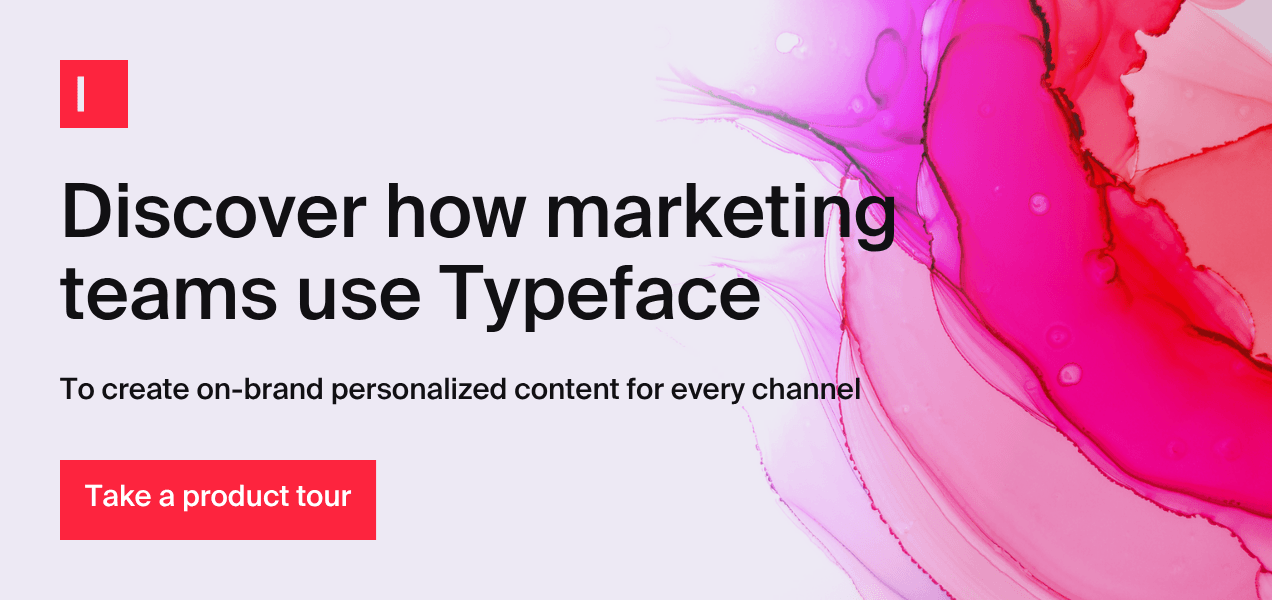
Multichannel campaign examples
1. CeraVe's "Michael CeraVe" campaign
CeraVe's "Michael CeraVe" campaign is a great example of a successful multi channel marketing campaign. The campaign launched into a crowded skincare market populated by celebrity-founded brands.
The core concept of CeraVe's "Michael CeraVe" campaign ingeniously played on the phonetic similarity between the brand name "CeraVe" and the actor "Michael Cera."
The campaign capitalized on an existing online meme that suggests Cera was involved with the brand. This narrative was meticulously seeded and amplified over several weeks in early 2024, culminating in a high-profile reveal with a Super Bowl ad.
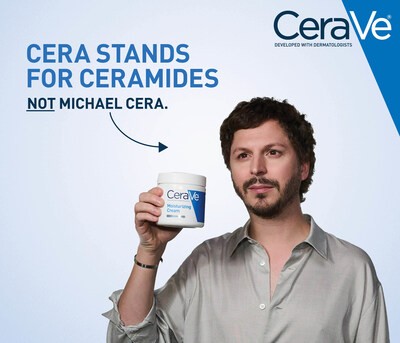
The campaign was gradually built up over weeks across multiple channels:
Influencer marketing: Over 450 influencers across various tiers and niches (beauty, lifestyle, comedy, dermatologists) were roped in for the campaign. "Bootleg" PR boxes containing CeraVe products and cryptic messages signed "Michael Cera" were sent to key beauty influencers, fueling speculation.
Podcast: Michael Cera made a memorable appearance on Bobbi Althoff's podcast, staging a walk-off when pressed about his connection to CeraVe, further amplifying the mystery.
PR: Cera was photographed carrying bags of CeraVe products in public and signing bottles in a Brooklyn pharmacy. "Paparazzi" style photos were strategically "leaked" to online platforms like Reddit and media outlets.
Social media: CeraVe's official channels publicly refuted Cera's claims, issuing statements denying his involvement and emphasizing the brand's dermatologist-developed origins.
Paid media (television ad): The centerpiece was a 30-second Super Bowl commercial (with an extended version released online).
Owned digital: A dedicated landing page was launched post-reveal to clearly explain the campaign's joke and reiterate the true origins of the CeraVe brand.
The results?
The results?
The campaign saw 1 billion impressions, was featured in 50 articles, and generated 74,000 website visits.
2. Heinz x Absolut campaign
This campaign involved a collaboration between Kraft Heinz, a legacy food giant which had recently entered the UK pasta sauce market in 2022, and Absolut Vodka, a well-established premium spirit brand.
This marketing campaign was based on the social media trend surrounding "Penne alla Vodka," which gained significant traction after model Gigi Hadid shared her recipe on TikTok and Instagram.
Capitalizing on a viral social media trend was a key objective, alongside driving trial, sales, and market share for the limited-edition product and the broader Heinz pasta sauce range.
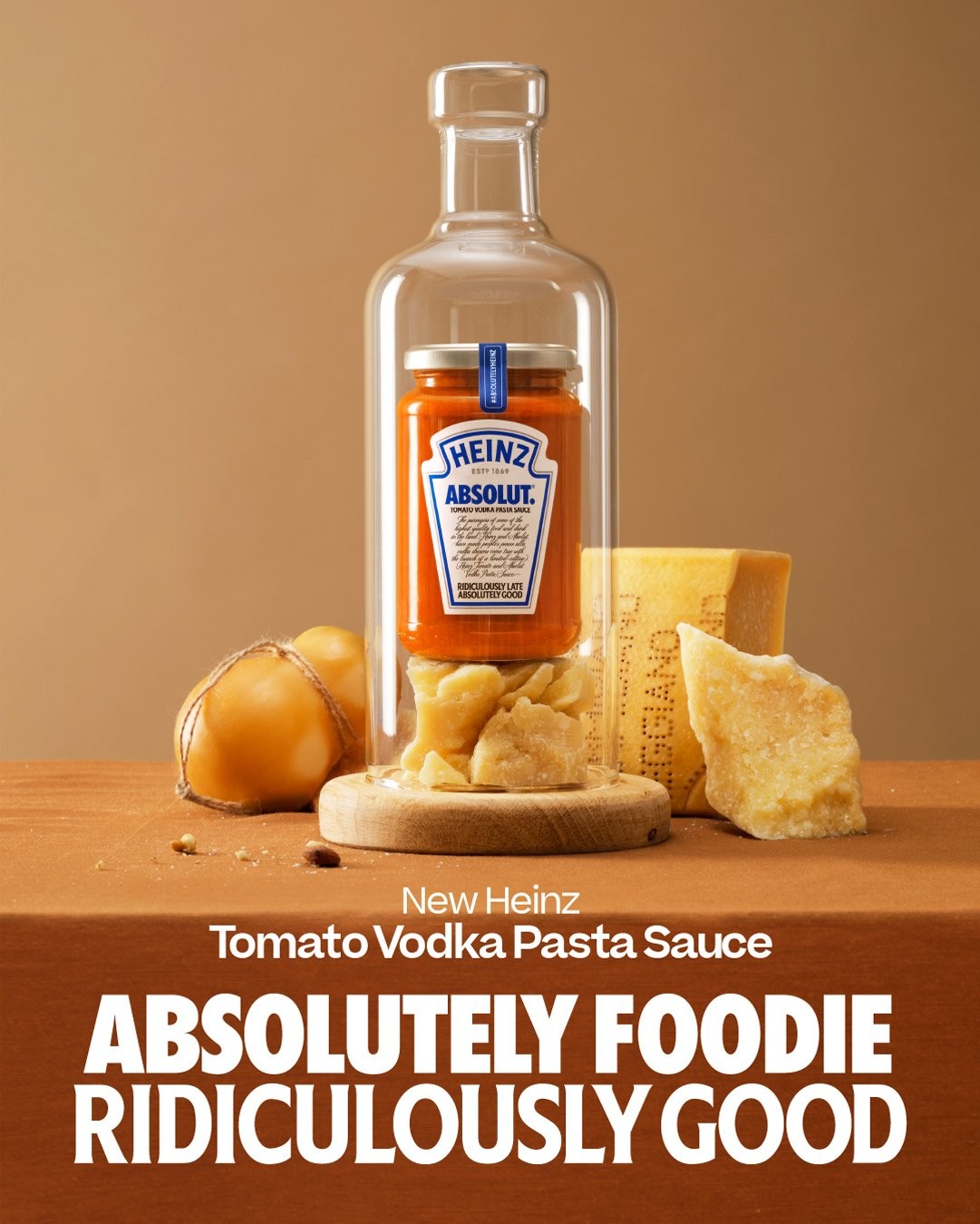
The campaign revolved around the product itself and integrated various channels:
Social media: The hashtag #AbsolutelyHeinz was popularized on social media to fuel conversation, encourage user-generated content (reviews, recipes), and tap into the existing trend.
Influencer marketing: Product samples were distributed to key media figures and influencers. Among them, nano-influencer @kristinacooksit played a significant role in the #AbsolutelyHeinz campaign on TikTok, contributing to its viral success.
Paid ad: Print and digital ads that visually mimicked the classic Absolut ad style and incorporated the Heinz branding and bottle silhouette with taglines like "Absolutely Heinz" and "Absolutely Tomato".
Landing page: A landing page was created as a central hub for all things #AbsolutelyHeinz. This page featured recipe ideas, FAQs about the Heinz X Absolut collaboration, and a gallery showcasing brand creatives developed exclusively for the campaign.
Retail marketing: An exclusive launch partnership with the UK retailer Waitrose drove initial traffic and buzz, followed by wider distribution.
The results?
The results?
The campaign generated a 52% sales uplift across Heinz's entire pasta sauce range. It saw exceptionally high sales velocity, averaging 50-55 units per store per week, compared to a typical category average of seven.
3. Dove 'Cost of Beauty' campaign
Personal care brand, Dove, has built a brand identity around the 'Real Beauty' campaign that challenges narrow beauty standards and promotes self-esteem.
The 'Cost of Beauty' campaign, launched in April 2023, represents a continuation of this mission, specifically addressing the detrimental impact of toxic social media beauty content on the mental health of young people.
The campaign aimed to achieve multiple goals simultaneously: raising awareness about the issue and advocating for legislative change, reinforcing Dove's brand purpose and increasing market penetration.
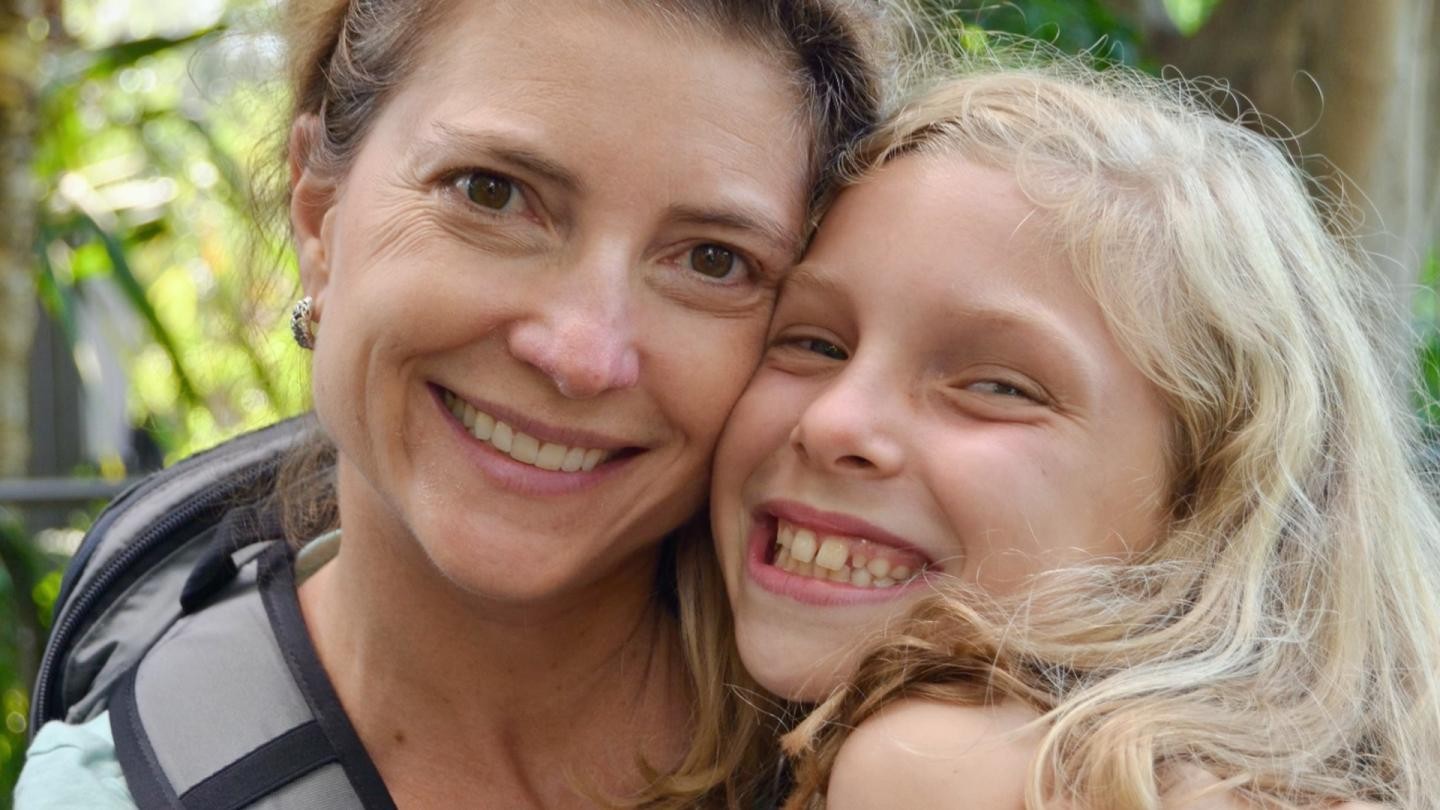
The campaign also employed a multichannel approach:
Hero film: The central creative piece was the "Cost of Beauty" film, created in collaboration with Oglivy and based on real experiences and developed in consultation with mental health experts. This film was distributed widely across digital platforms.
Live event: Dove convened "A Call for Kids' Online Safety: A Forum for Change," a live event in Los Angeles featuring experts, policymakers, youth, and parents.
Social media: The live event, film and campaign messages were promoted extensively across platforms including TikTok, Facebook, Instagram, YouTube, and LinkedIn, encouraging shares and discussion.
Website: Dove's website served as a hub for campaign information, housing the film, research findings and other resources.
The results?
The results?
The campaign saw 6.6 billion US impressions, more than twice its goal of 3.1 billion. The 'Cost of Beauty' film received over 19 million views on various platforms. It also had a strong social impact, gathering over 101,000 petition signatures for KOSA, exceeding the target of 50,000.
Scale your multichannel marketing campaigns with Typeface
As demonstrated by successful campaigns from brands like CeraVe, Heinz, and Dove, effective multichannel marketing can strengthen brand recognition and drive more conversions.
With Typeface as your content engine, you can achieve similar results without the resource constraints that typically limit campaign scalability.
Start creating brand-consistent, multi channel campaigns faster and easier than ever before. Get a demo today!
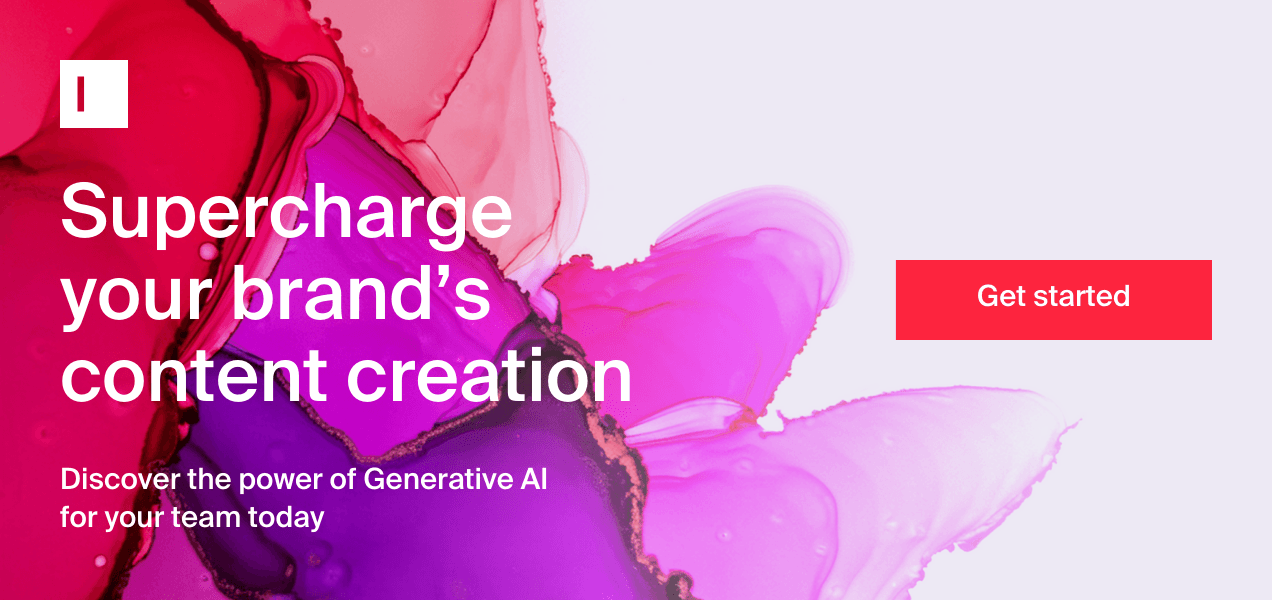
Share
Related articles

AI at Work
7 Generative AI Use Cases in Enterprise Marketing

Neelam Goswami · Content Marketing Associate
November 12th, 2024 · 15 min read

AI at Work
AI Brand Management: How to Maintain Brand Consistency With AI Image Generators

Neelam Goswami · Content Marketing Associate
November 26th, 2025 · 13 min read
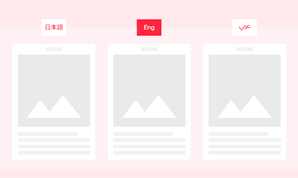
AI at Work
AI-Powered Content Localization: How Enterprise Brands Scale Content Marketing Without Sacrificing Local Relevance

Neelam Goswami · Content Marketing Associate
December 3rd, 2024 · 13 min read